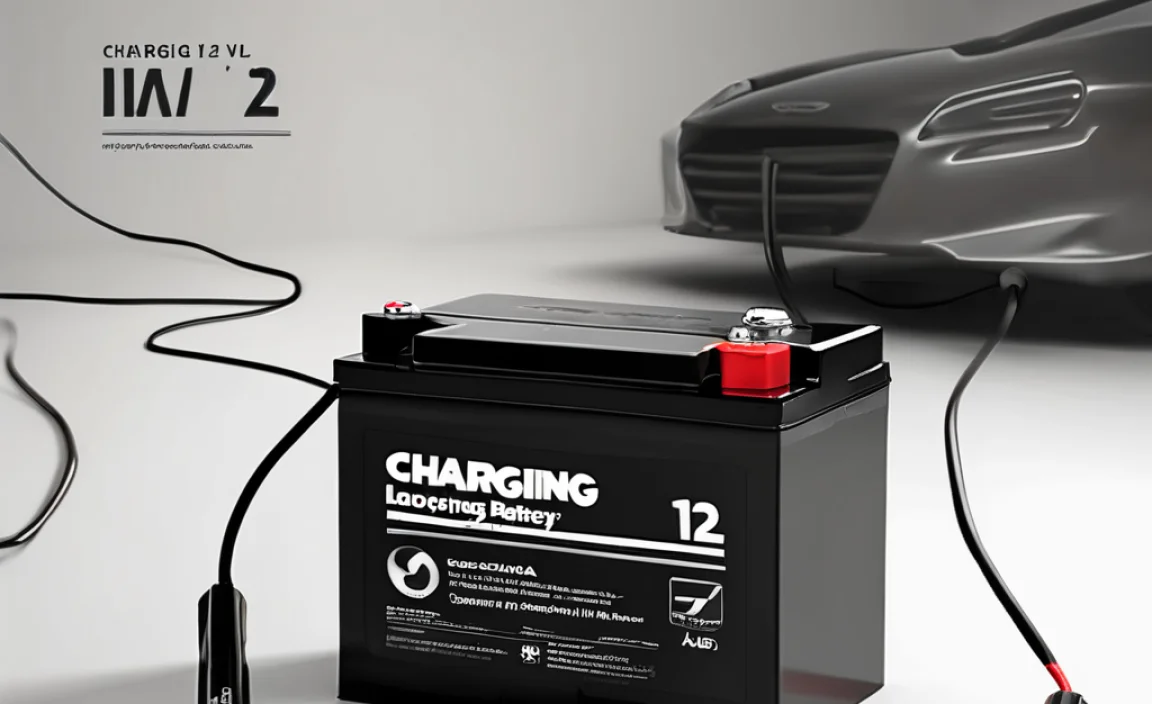Quick Summary:
If your Mac lacks a standard USB-A port, you’ll need a USB-C to USB-A adapter or hub. This handy device lets you connect older accessories like flash drives, mice, and keyboards to your newer Mac. Choose based on the number of ports you need and your budget for a seamless connection.
<h1>Navigating Mac USB Ports: Your Essential Quick Guide to Adapters</h1>
<p>Ever gotten a new Mac and realized your favorite USB flash drive, mouse, or keyboard just won’t connect? It’s a common hiccup with modern MacBooks and iMacs, which have mostly switched to the sleek, smaller USB-C (or Thunderbolt 3/4) ports. These new ports are fantastic for speed and versatility, but they mean your older, trusty USB-A gadgets might feel left behind. Don’t worry, this guide is here to make connecting everything simple and frustration-free. We’ll walk through exactly what you need and how to pick the best Mac adapter for your USB devices, ensuring you can keep using all your gear without missing a beat. Let’s get you powered up and connected!</p>
<h2>Why the USB-C Shift? A Quick Peek.</h2>
<p>Apple, like many tech giants, has embraced USB-C. This newer port is smaller, reversible (no more fumbling to plug it in the right way!), and can handle faster data speeds and more power than older USB-A ports. Think of it as an upgrade in efficiency and design. However, this change means that the ubiquitous rectangular USB-A ports you’ve used for years aren’t always built into the latest Macs. This is where adapters and hubs come in, acting as a bridge between your new Mac and your existing accessories.</p>
<h2>Understanding the Adapter Landscape: USB-C to USB-A</h2>
<p>At its core, the solution is simple: you need something to convert the USB-C port on your Mac into a usable USB-A port. There are two main types of devices that do this:</p>
<ul>
<li><strong>USB-C to USB-A Adapters:</strong> These are the most basic and often the most affordable. They are usually small, dongle-like devices that plug into your Mac’s USB-C port and provide one or more standard USB-A ports. They’re great if you only need to connect one or two things at a time.</li>
<li><strong>USB-C Hubs:</strong> These are more substantial devices that offer a wider array of ports. Beyond USB-A, a hub might include additional USB-C ports, HDMI for displays, SD card readers, Ethernet ports, and even power delivery (PD) passthrough. If you need to connect multiple accessories or want a more comprehensive docking solution, a hub is the way to go.</li>
</ul>
<h3>Key Differences: Adapter vs. Hub</h3>
<p>Think of an adapter as a single tool designed for one job, while a hub is more like a multi-tool or a mini-docking station. If you just need to plug in your old mouse, an adapter is perfect. If you want to connect your mouse, keyboard, an external monitor, and charge your laptop all at once through a single port on your Mac, a hub is a much better fit.</p>
<table>
<caption>Choosing Between USB Adapters and Hubs</caption>
<thead>
<tr>
<th>Feature</th>
<th>USB-C to USB-A Adapter</th>
<th>USB-C Hub</th>
</tr>
</thead>
<tbody>
<tr>
<td><strong>Port Variety</strong></td>
<td>Primarily provides USB-A ports.</td>
<td>Offers multiple port types (USB-A, USB-C, HDMI, SD card, Ethernet, etc.).</td>
</tr>
<tr>
<td><strong>Port Quantity</strong></td>
<td>Usually 1-3 USB-A ports.</td>
<td>Can offer many ports, including multiple USB-A and USB-C.</td>
</tr>
<tr>
<td><strong>Portability</strong></td>
<td>Very small and lightweight, easy to carry in a pocket or bag.</td>
<td>Larger and heavier than adapters, but still portable.</td>
</tr>
<tr>
<td><strong>Power Delivery</strong></td>
<td>Typically does not support charging your Mac through it.</td>
<td>Many hubs offer USB-C PD passthrough, letting you charge your Mac while using other ports.</td>
</tr>
<tr>
<td><strong>Use Case</strong></td>
<td>Connecting a single or a few USB-A devices.</td>
<td>Expanding connectivity for multiple devices, creating a desktop setup, or replacing a full docking station.</td>
</tr>
<tr>
<td><strong>Price</strong></td>
<td>Generally more affordable.</td>
<td>Can be more expensive, depending on features and brand.</td>
</tr>
</tbody>
</table>
<h2>What to Look For When Buying a Mac USB Adapter</h2>
<p>When you’re looking for the right adapter or hub, a few things are important to consider. Think about how many devices you’ll need to connect, what types of devices they are, and how much speed you need. As Roy Walker, I always say, planning ahead saves headaches later!</p>
<h3>1. Port Count and Type</h3>
<p>This is probably the most important factor. How many USB-A ports do you need? Just one for your mouse? Or several for a keyboard, flash drive, and a printer? If you have multiple devices that need simultaneous connection, a hub with several USB-A ports is essential. Also, check if you need other ports like HDMI for external monitors or an SD card reader for your photos.</p>
<h3>2. USB Speed Standards (USB 3.0, 3.1, 3.2)</h3>
<p>USB ports have different speeds. You’ll often see terms like USB 3.0, USB 3.1 Gen 1, USB 3.1 Gen 2, or USB 3.2. The higher the number and generation, the faster the data transfer. For most everyday tasks like using a mouse, keyboard, or transferring files from a standard flash drive, USB 3.0 (often called USB 3.1 Gen 1 or USB 3.2 Gen 1, which all offer speeds up to 5Gbps) is perfectly fine. If you’re transferring very large files from external SSDs or using high-speed card readers, you might want to look for USB 3.1 Gen 2 or USB 3.2 Gen 2 (up to 10Gbps) or even USB 3.2 Gen 2×2 (up to 20Gbps), though those are less common on basic adapters and hubs for USB-A devices.</p>
<p>Most MacBooks released since 2016 feature Thunderbolt 3 or Thunderbolt 4 ports, which use the USB-C connector and are backward compatible with USB 3.0, 3.1, and 3.2 standards, often at their maximum speeds. For example, a Thunderbolt 4 port can generally support up to 40Gbps for compatible Thunderbolt devices, but will communicate with USB 3.2 devices at their specified speeds via the adapter.</p>
<h3>3. Power Delivery (PD) Passthrough</h3>
<p>If your Mac only has one or two USB-C ports (like many MacBooks), you might want an adapter or hub that also allows you to charge your Mac. Look for “Power Delivery” or “PD” support. This means the hub has a dedicated USB-C port where you can plug in your Mac’s charger. The power then passes through the hub to charge your laptop, while the other ports on the hub remain available for your accessories. This is incredibly convenient for reducing the number of cables you need to manage.</p>
<h3>4. Build Quality and Portability</h3>
<p>Consider how you’ll use the adapter. If it’s for a travel setup, a small, lightweight adapter or a compact hub is ideal. For a permanent desk setup, a more robust hub with a solid build might be preferred. Materials like aluminum can offer better durability and heat dissipation than plastic. Look for reputable brands known for quality electronics. For safety and reliability, especially with power, sticking to established brands is a good practice.</p>
<h3>5. Brand and Reviews</h3>
<p>Just like choosing a reliable car battery, opting for a known brand for your tech accessories can offer peace of mind. Read reviews from other Mac users to see how the adapter or hub performs with MacBooks and iMacs. People often share valuable insights about compatibility, speed, and durability.</p>
<h2>Types of USB Accessories You’ll Connect</h2>
<p>The beauty of USB-A ports is their universality. Here are some common gadgets you’ll likely want to connect to your Mac using an adapter:</p>
<h3>Keyboards and Mice</h3>
<p>Many desktop keyboards and mice still use the classic USB-A connector. An adapter lets you use your favorite ergonomic keyboard or precise gaming mouse with your MacBook, transforming it into a more comfortable workstation.</p>
<h3>Flash Drives and External Hard Drives</h3>
<p>Your trusty USB flash drives and older external hard drives are perfect candidates for adapters. This allows you to transfer files, back up important documents, or access your media library on your newer Mac.</p>
<h3>Printers and Scanners</h3>
<p>Many printers and scanners, especially older models, rely on USB-A connections. An adapter ensures you can still print those important documents or scan precious photos with your Mac.</p>
<h3>Webcams and Microphones</h3>
<p>Some external webcams and microphones use USB-A for connection. If you need higher quality audio or video than your Mac’s built-in options, an adapter will be your friend.</p>
<h3>Legacy Devices</h3>
<p>This could include anything from older digital cameras to USB-powered accessories like desk lamps or fans. If it has a USB-A plug, an adapter will likely make it work with your modern Mac.</p>
<h2>Step-by-Step: Connecting Your USB Device with an Adapter</h2>
<p>Using a USB-C to USB-A adapter on your Mac is super straightforward. You don’t need to be a tech guru! Follow these simple steps, and you’ll be connected in no time.</p>
<h3>Step 1: Identify Your Mac’s Ports</h3>
<p>First, look at the sides or back of your Mac. You’ll see the smaller, oval-shaped USB-C (or Thunderbolt 3/4) ports. Note how many you have available.</p>
<h3>Step 2: Connect the Adapter to Your Mac</h3>
<p>Take your USB-C to USB-A adapter (or hub) and plug its USB-C connector firmly into one of your Mac’s available USB-C ports. It should fit snugly.</p>
<h3>Step 3: Connect Your USB-A Device</h3>
<p>Now, take your USB-A device (like a flash drive, mouse, or keyboard) and plug its USB-A connector into one of the USB-A ports on the adapter/hub. Again, make sure it’s plugged in all the way.</p>
<h3>Step 4: Check Your Mac’s Display</h3>
<p>Your Mac should automatically recognize the device. If it’s a storage device like a flash drive, it should appear on your Desktop or in the Finder sidebar. For input devices like a mouse or keyboard, they should start working immediately. No software installation is usually needed for basic USB accessories.</p>
<h3>Step 5: For Hubs with Power Delivery (Optional)</h3>
<p>If you’re using a hub with PD passthrough and want to charge your Mac: Plug your Mac’s original USB-C charger into the dedicated USB-C PD port on the hub. Then, connect the hub to your Mac. Your Mac will then be able to charge while you use the other ports on the hub.</p>
<h2>Important Considerations for Mac Users</h2>
<p>While adapters are usually plug-and-play, there are a few things Mac users should be aware of to ensure the best experience.</p>
<h3>Thunderbolt vs. USB Speeds</h3>
<p>Remember that while your Mac’s USB-C port might be a high-speed Thunderbolt port (up to 40Gbps), it will only transfer data at the speed supported by your USB-A device and the adapter. A USB 2.0 flash drive will still be slow, even when plugged into the fastest adapter connected to a Thunderbolt 4 port. For optimal performance, try to match the USB standard of your device with the adapter’s capabilities where possible.</p>
<h3>Power Consumption</h3>
<p>Be mindful of how many power-hungry devices you connect to a single adapter or hub, especially if your Mac is not plugged into power or if the adapter itself doesn’t have external power. A simple dongle style adapter usually draws power directly from your Mac’s port. If you connect too many devices that require significant power (like external hard drives without their own power source), you might experience issues, or your Mac’s battery might drain faster.</p>
<h3>Compatibility with Apple Ecosystem</h3>
<p>Most reputable USB-C adapters and hubs work seamlessly with macOS. However, for advanced features on specific docks or hubs (like certain Thunderbolt display functionalities), it’s always a good idea to check the manufacturer’s specifications for macOS compatibility. Apple’s own USB-C adapters and hubs are, of course, guaranteed to work perfectly.</p>
<h3&


